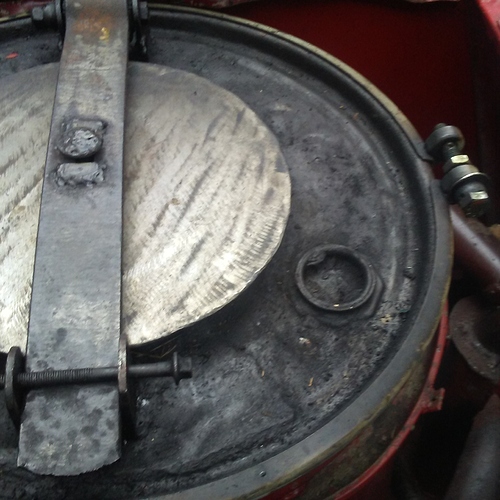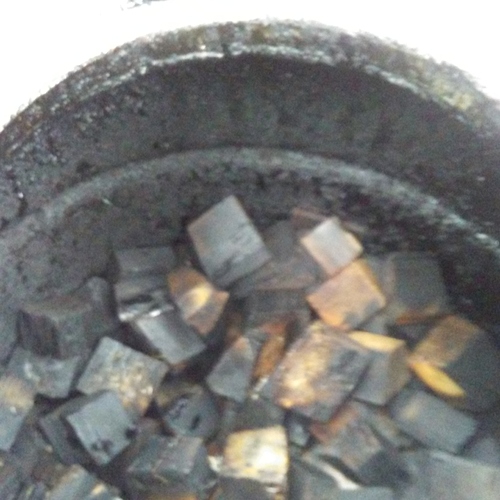I am doing a presentation on wood gas to show that I can use Microsoft office effectively. One of the things I need to do create an original chart / graph. I would like to compare fuel usage and its cost. I won’t be presenting who responds just the information that is shared. What I Would like to know is what you get for pounds per mile and what it would be if it were miles per gallon, it would also help if you could include what it roughly costs per pound. Thanks for helping.
I have a 1995 Ford F-250 with a 460 CI engine
On gasoline it gets about 11 to 13 MPG at $3 gallon = $0.25 per mile and can easily do 70 miles per hour
On woodgas it gets about 1 mile per 2.5 lb of wood at 15% moisture but top speed is about 45 miles per hour.
Cost is difficult to compute.
The wood is usually free,but collection and processing to chunks is about 1 to 3 minutes per pound.
I am mostly retired but when working i was paid $63/hr or a cost of somewhere from $0.01 to $5.25 per mile.
Obviously since i enjoy the whole process lets go with $0.05 per mile
Good morning Benjamin
You may want to take a look at these test done by Auburn University ( War Eagle )
http://www.driveonwood.com/library/auburn-test/
These test showed my 93 Dakota will get 1.3 miles per pound of wood and almost 21 miles per gallon of gasoline when driven at speeds between 50 and 55 miles per hour.
One thing I would like to note is I have updated the gasifier design with hopper cooling tubes which I think improves performance and millage even more .
Gasoline in my area is 2.20 a gallon .
As far as the cost of my wood fuel is hard to calculate. I always use scrap wood for fuel that has no other value . I do add my labor to chunking the wood but I enjoy the work . I know that is hard to explain but is is kinda like going out for a jog . Some people would think it is work while others might enjoy it ?
I do use some diesel while chunking the wood but the machine I use I think would chunk a ton of wood with a quart of fuel !!
When I gasifie the wood grown on my farm out driving and then come back home to dispose of my ash and char I am just using the solar energy from the farm by bring the nutrients right back where they come from .
Here is another reason that makes it hard for me to calculate wood cost . 95% of the wood I use in my gasifier comes from scrap sawmill slabs. These logs were hauled in to my mill from other land owners . I use the scrap in my truck and deposit the ash and char on my farm ( free fertilizer )
So far my 4.3 carb truck gets 12 too gallon gasoline and uses right about 1.2 pounds of wood per mile.And as Wayne K says he can get 1.3 miles per pound of wood with the dakota that runs good miles per gallon gasoline.II Think It all depends how well the truck runs on petro.And when i replace my cyclones with the Wayne Keith type heat recovery exchangers, And hook up a hopper condencer,i should be under a mile a pound at least, with a non computorized carb engine.
today i have some time to read in depth… but not sure if i am awake… 
In some form, i have a comparing table, comparing the energy value of used fuels…
so if your car uses x mass on gasoline , it would take x mass on wood or charcoal etc…
Sorry Koen i dont read blue prints well, and kg too leters too #wood dont compute. I mostly was just expressing the value of the WK heat exchanger as improveing the miles per pound, along with his hopper cooler water & tar drains all aid too miles per pound gain per average wood sourse. How would the math be done comparing 16 pounds wood per gallon gasoline too a vehicle dakota or chevy s10 that gets highway mpg around 21 mpg. And my old carb non computer 4.3 gets about 12 mpg . I barely passed math class and wood rather weld than try math equations. The only way i could figure the math is the trip takes 1.6 gallons of gasoline for 18 miles and 25 pounds of wood for the same trip.Than i think i am pretty close too 16 pounds a mile allready.?
Hi Kevin,
I think you’r very close to be at the perfect level if not better.
My chart is only to compare energy from one fuel to energy from another.
Give me some moments to calculate your gallons to miles to pounds … i am getting old for learning fast 
0,72 pounds to a mile if you do 25 pounds for 18 miles
I am serprized its this good for an old carb motor, its 5 in the morning our time, i am just unwinding from the christmas party food storage, I will check back in few hours Thanks Koen fore the reponds.
Koen you fliped the equation wrong.
Did i read wrong or is my mind distorted from to much reading these day’s ?
That would be 11.25 Mpg
If the numbers are fliped the other way than i am getting 1.38 pounds per mile.
Yup, my mind distorted…
need some rest i guess
That’s why they invented teamwork… checking on each others work to get the correct results
Good after Christmas morning Koen VL
I actually love math. Passably good at it sometimes.
The great danger of comparing fuels just on a calorific/energy basis is that does not account for the efficiency Loss in the “engines” energy to shaft power conversion capability.
An example would be a wood fired steam car versus a WK system in an IC engined vehicle.
In rail locomotives BTU/Calories used any diesel-electric beats the snot out of any steam rail.
In math terms: A = B. B = C. So then A MUST also = C.
Ha! Too often not valid in real world applications.
Make “A” all fruits beginning with the letter A. Apples, apricots, etc.
make “B” all fruits beginning with the letter B. Banana’s, blue-berries, etc.
Make “C” all fruits beginning with the letter C. Citrus, chokeberries, etc.
Should work out ,eh as fruit portions right? Some poorly thought out nutritionists insist this works. Talk in terms of daily fruit-portions as interchangeable/exchangeable.
What you can get/grow locally must have favored status. Give it a 2X multiplier.
What is digestively gentle to the individual WILL demand priority! Give that a 3X multiplier.
Engine fuels to shaft power are just as picky/restrictive.
Regards
tree-farmer for fuels Steve Unruh
IHi Steve I kind of restarted the fuel use check . I think it all runs better and cleaner than gasiline, Wayne even burnt a roll of plastic bags cut up intoo chunks and passed imissions after it all goes through his personel type of charbed cracking design,mine is running just fine and i am verry happy with the power, i am kind of glad i went with 6 cylinder instead of 4 cyl.for the extra pulling power.i weighed in at scrap yard just over 7000 pounds and had just enough power too get me there 16 mile range. Though the one steep hill had me woundering if i would have too restart with petro, due too the fact i have carberator, and they wont hibrid like the 93 too 95 v8 dakota does the best so far.PS MY OLD CARB 4.3 TRUCK WITH THE COMPUTOR CAM WITCH DONT WORK TOO GOOD WITH CARB MOTORS, STILL GETTING ABOUT ONE MILE PER POUND OR POUND AND A LITTLE MORE, NICE MILEGE. YOU JUST HAVE TOO ENJOY THE OUT DOORS WOOD WORKING PROCESSING. HAPPY NEW YEAR, THANKS FOR YOUR RESPONDS, God bless.
Morning Steve U,
Yup i agree, not easy but in some form needed…
Same as for reloading, the propellant… what’s good for one barrel would not work for another…
Grain size, burning velocity…
At the end we see “my wood is better then your’s” but is it really ?
I prefer to say “keep your powder dry”, same goes for wood and charcoal in the gasifier…
How much it consumes is just an overall calculation… how does it performs its duty and how does it hold up over time is worth to be concerned about. How reliable your system is would the question to ask.
Are you happy with the results of your work, then enjoy.
If you want more out of it, then study, tinker, improve… No limits in imagination, only your own.
in an equal constructed balance you’l always need a little more then 1 kilo to lift 1 kilo, never less …
For me , life is searching to come near as possible to that 1 to 1 point… but i also learned that it will always be that little more… always some road left to go … endless moments of enjoying myself with learning something …
Its not my “i do write” that indicates how much i know, that’s just the proof i know so little.
But the “i do read from others” that gives me wisdom…
That includes reading all the postings from the people here on DOW
I agree 100% Koen VL.
I forget you have a back ground in loading propellants. Actually teaches much. You must be careful and super observant as things happen rapidly. Especially when changing more than one factor at a time. And the often unobserved factor’s of seasonal temperature/humidty and location altitude changes.
I once stood at a sellers table of loading powers as a newbie/wanna-be asked for the one-best-work for-all single loading power!!?? Ain’t no such thing. You dangerous man. Read some loading books and discover up to 150 different loading powders.
Internal combustion piston engines driving through a crankshaft are even more complex than any cartridge/chamber/barrel combination.
That IC engine it is about the pressure rise versus crank angle within a variable cylinder volume.
And that is just three of the dynamic factors.
So not to be demeaning but on many engine forums I have stood beside too many who think engine fuels are just about BTU/calorific energies comparisons. Or just knock/centane ratings. Or vapor pressure ratings. Or hydrogen/carbon ratios.
Yep. Yep. ALL of these plus many more factors
Best regards
tree-farmer for fuels Steve unruh

